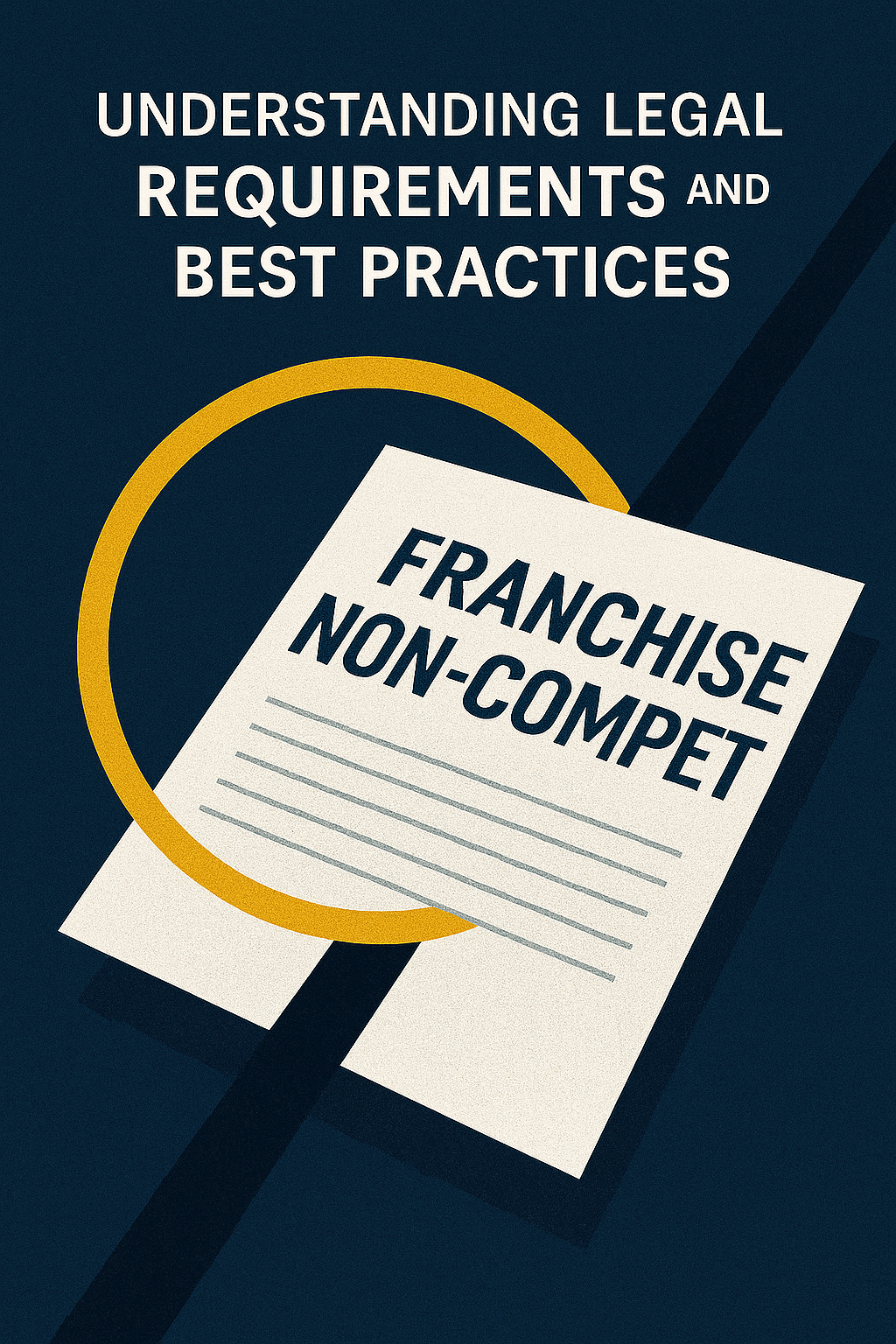In the world of franchising, subfranchising is a concept that has gained significant attention and popularity. It allows a franchisor to grant a franchisee the right to grant its own franchises under the parent franchisor’s brand and business model. This article aims to provide a comprehensive understanding of subfranchising, exploring its benefits, drawbacks, legal considerations, and key factors to consider when negotiating subfranchising terms.
Understanding Franchise Agreements: A Comprehensive Guide
Franchise agreements form the foundation of any franchise relationship. These agreements outline the rights and responsibilities of both the franchisor and the franchisee. Understanding the nuances of franchise agreements is crucial for any party involved in the subfranchising process. From defining territory and intellectual property rights to outlining financial obligations and training requirements, franchise agreements lay out the practical aspects of the business arrangement.
When it comes to subfranchising, the role of the franchisor becomes more complex. While the parent franchisor has a vested interest in the success of all franchisees, franchisors must strike a balance between maintaining control over their brand and allowing subfranchisees to operate independently. Building a strong brand image and offering ongoing support and training are key aspects of a successful subfranchising model.
Exploring the World of Subfranchising: An Overview
Subfranchising opens up opportunities for rapid expansion. It allows franchisors to leverage the resources, expertise, and local knowledge of subfranchisees to expand their brand presence in new territories. By granting subfranchisees the right to open additional units, franchisors can quickly penetrate new markets and maximize their growth potential.
However, subfranchising also comes with its own set of challenges. Finding the right subfranchisee who shares the same values, commitment, and passion for the brand is crucial. Franchisors must invest time and effort into vetting potential subfranchisees to ensure they align with the brand’s core values and have the ability to uphold the franchisor’s standards.
The Benefits and Drawbacks of Subfranchising
Subfranchising offers several benefits to both franchisors and subfranchisees. For franchisors, it provides an avenue for rapid expansion without the need for significant capital investment. Subfranchisees, on the other hand, can benefit from an established brand and business model, minimizing the risks associated with starting a business from scratch.
Despite these advantages, subfranchising also presents certain drawbacks. Franchisors must strike a delicate balance between maintaining brand control and granting subfranchisees the autonomy they need to thrive. Franchisees must be willing to relinquish some level of control to subfranchisees, which can sometimes lead to conflicts or compromise the brand’s consistency.
Legal Considerations: Navigating Subfranchising Laws and Regulations
Subfranchising is subject to various laws and regulations that vary from jurisdiction to jurisdiction. Franchisors must familiarize themselves with these legal requirements to ensure compliance. From disclosure obligations to registration requirements, franchisors must navigate an intricate web of legal considerations when engaging in subfranchising.
Additionally, protecting intellectual property rights is of utmost importance. Franchisors must establish clear guidelines and procedures to safeguard their trademarks, trade secrets, and other intellectual property assets. Implementing comprehensive confidentiality and non-compete agreements can further protect a franchisor’s interests.
How to Choose the Right Subfranchisee for Your Business
Choosing the right subfranchisee is critical for the success of a subfranchising arrangement. Franchisors should conduct thorough due diligence and evaluate potential subfranchisees based on their business experience, financial stability, and alignment with the brand’s values. It is also essential to assess the subfranchisee’s ability to manage and grow the business, ensuring that they have the necessary skills and resources to oversee multiple units.
Once the right subfranchisee is identified, effective training and ongoing support become instrumental. Providing comprehensive training programs, operational manuals, and continuous support will help subfranchisees adhere to the franchisor’s system and maintain the consistent quality that customers expect from the brand.
The Role of the Franchisor in Subfranchising Arrangements
Franchisors play a crucial role in subfranchising arrangements. They act as the guardians of the brand, responsible for upholding the brand’s reputation and ensuring that subfranchisees adhere to the established standards. Franchisors must establish clear communication channels and maintain regular contact with subfranchisees to address any concerns, provide guidance, and assess performance.
Setting up systems and processes for monitoring and managing subfranchisees is essential. From conducting periodic evaluations to implementing reporting mechanisms, franchisors can stay informed about the progress of subfranchisees and intervene when necessary to maintain brand consistency.
Ensuring Compliance: Monitoring and Managing Subfranchisees
Monitoring and managing subfranchisees’ compliance with the franchise system is crucial for the success of subfranchising arrangements. Franchisors should establish clear guidelines and metrics to evaluate subfranchisee performance. Regular audits, quality control measures, and timely feedback are essential tools to ensure compliance and consistency across all units.
Additionally, providing ongoing support to subfranchisees fosters a collaborative environment. Franchisors must offer guidance, training, and assistance whenever required to help subfranchisees overcome challenges, improve their operations, and achieve business success.
Negotiating Subfranchising Terms: Key Factors to Consider
When negotiating subfranchising terms, several key factors must be considered to protect the interests of both the franchisor and the subfranchisee. These factors include territory allocation, exclusivity rights, operational requirements, financial obligations, and termination clauses. Negotiating a fair and balanced agreement ensures a mutually beneficial relationship that encourages growth and success.
Franchisors should seek legal counsel to draft comprehensive and enforceable subfranchise agreements. These agreements should outline the rights and obligations of both parties in detail, leaving no room for ambiguity. By setting clear expectations from the outset, subfranchising relationships can flourish with minimal disputes.
Protecting Intellectual Property Rights in Subfranchise Agreements
Protecting intellectual property rights is a critical aspect of subfranchise agreements. Franchisors have invested significant time, effort, and capital into developing their brand, trademarks, trade secrets, and proprietary operating systems. It is essential to secure these assets through robust confidentiality and non-compete agreements.
Franchisors should establish clear guidelines regarding the use of trademarks, logos, and other intellectual property assets by subfranchisees. Regular inspections and audits can ensure compliance, preventing any unauthorized use or dilution of the brand’s image.
Financial Implications of Subfranchising: Costs, Fees, and Royalties
Subfranchising involves various financial implications for both franchisors and subfranchisees. Franchisors may charge an upfront subfranchise fee, ongoing royalties, and marketing fees to compensate for the support and resources provided. Subfranchisees must also bear the costs of opening and operating the business, including lease expenses, equipment, and inventory.
Franchisors must carefully structure their financial model to ensure it is fair, reasonable, and economically viable for both parties involved. It is crucial to strike a balance between generating revenue for the franchisor and offering a profitable opportunity for subfranchisees.
Training and Support for Subfranchisees: Best Practices for Success
Successful subfranchising arrangements heavily rely on effective training and ongoing support. Franchisors should provide comprehensive initial training programs, covering all aspects of the business from operations to marketing. Ongoing support through regular communication, field visits, and mentoring programs enhances subfranchisees’ performance and fosters a collaborative environment.
Sharing best practices, facilitating knowledge transfer, and organizing training workshops and conferences are effective ways to enhance subfranchisees’ skills and knowledge. By investing in subfranchisee development, franchisors can ensure the long-term success of their subfranchise network.
Resolving Disputes in Subfranchise Relationships: Mediation vs Arbitration
Disputes can arise in any business relationship, including subfranchising arrangements. When conflicts occur, it is essential to have a clear mechanism for resolution in place. Mediation and arbitration are common dispute resolution methods used in subfranchise relationships.
Mediation offers a non-adversarial approach, where a neutral third party facilitates negotiations between the franchisor and subfranchisee to reach a mutually satisfactory resolution. On the other hand, arbitration involves presenting the dispute to a neutral arbitrator or panel, who makes a binding decision based on the evidence and arguments presented.
Case Studies: Successful subfranchising models in various industries
Examining successful subfranchising models in various industries provides valuable insights and inspiration for both franchisors and potential subfranchisees. Case studies can highlight best practices, challenges faced, and strategies implemented to overcome obstacles in different business environments.
International Expansion through Subfranchising: Opportunities and Challenges
Subfranchising offers an excellent opportunity for franchisors to expand their business internationally. It allows them to tap into the local knowledge and expertise of subfranchisees, ensuring cultural relevance and adaptability to foreign markets.
However, international subfranchising comes with its own set of challenges. Franchisors must navigate cultural differences, legal complexities, and economic variations. Adapting the business model to suit local preferences and customs is crucial for success in international subfranchising.
Growth Strategies: Leveraging Subfranchising as a Business Expansion Tool
Subfranchising can be a powerful growth strategy for franchisors looking to expand their brand presence in a scalable and efficient manner. It allows franchisors to tap into the entrepreneurial spirit and resources of subfranchisees, accelerating brand growth and market penetration.
Franchisors should develop a clear growth strategy and identify appropriate territories for subfranchising. Conducting market research, analyzing competition, and assessing market demand are essential steps to ensure the success of subfranchise units.
Adapting Franchise Systems to Accommodate Subfranchising
Franchisors must adapt their franchise systems to accommodate subfranchising arrangements. This may involve amending existing franchise agreements, developing additional training modules, integrating technology to facilitate communication and reporting, and streamlining operational processes to support subfranchise units.
Clear communication and transparency are vital during the transition from a single-unit franchisor to a subfranchisor. Franchisors must outline the changes and implications of subfranchising to existing franchisees to ensure a smooth transition and maintain trust within the network.
Building a Strong Brand Image through Effective Subfranchising
Effective subfranchising can contribute to building a strong brand image. By carefully selecting subfranchisees who align with the brand’s values and investing in their training and support, franchisors can ensure consistent quality and customer experience across all subfranchise units. A strong brand image instills confidence in consumers and attracts prospective franchisees, leading to further growth and success.
The Future of Subfranchising: Emerging Trends and Innovations
The world of franchising is constantly evolving, and subfranchising is no exception. Emerging trends, technological advancements, and changing consumer behaviors have an impact on subfranchising models. Keeping abreast of these developments, exploring new markets, and embracing innovation are essential for remaining competitive in the dynamic subfranchising landscape.
Exit Strategies for Franchisors in Subfranchise Relationships
Franchisors may reach a point where they need to exit a subfranchising relationship. Having a well-defined exit strategy protects the interests of both parties and ensures a smooth transition. Exit strategies may include buybacks, reselling subfranchise units, or transferring subfranchises to new operators. Franchisors should plan for various exit scenarios to limit potential disruptions and preserve the value of their brand.
In conclusion, subfranchising offers exciting opportunities for franchisors and subfranchisees alike. By understanding the role and rights of subfranchising, both parties can enter into mutually beneficial arrangements that foster business growth and success. From carefully selecting subfranchisees to negotiating fair agreements and providing ongoing support, the journey of subfranchising is a collaborative effort that builds strong brands and expands market reach.







